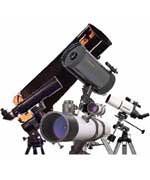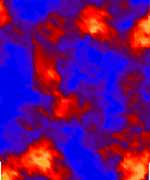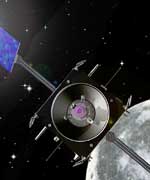
Image credit: Astro.Geekjoy
Contrary to what might be expected, it’s actually quite easy to select a telescope, followed by another telescope, followed by another. In fact many amateurs have been known to select dozens.
But here’s the real challenge: Try selecting your last telescope first. To do so comes down to just two things: Views and usability. If a scope doesn’t deliver the views, you won’t use it. And if it isn’t usable, you won’t bother with the views. It’s as simple – and as difficult – as that.
For instance, a very compact telescope on a lightweight mount can easily be transported from house to yard and back again. If it fails to show you anything you want to see however, the instrument will quickly become a “conversation piece” – like that brass telescope in the office at work…
Meanwhile a large telescope may require complex setup and dissassembly – not to mention the brute force needed to carry around as parts. Such a scope – despite bright views – may be rendered useless for lack of spontaneous access. But other reasons can also discourage the observer – such as difficulty orienting a large instrument toward certain regions of the sky or having to stand on a pedestal or ladder to engage the eyepiece. Great views – once you bother to set it all up…
The author has used scopes at both these extremes. One telescope of fine optics gave sharp views but – due to extremely small aperture – was unable to show anything worth viewing. (Despite the fact that the entire assembly – scope AND mount – could easily be carried about in one hand.) Meanwhile the author has also watched fellow observers take nearly an hour setting up a large truss-framed Newtonian telescope on a relatively simple (dobsonian) mount. (All the while the sky darkened and stars drifted a full fifteen degrees across the heavens.) Of course once this particular scope was assembled, the author was more than willing to peek through the eyepiece. So setup time and portability are important factors the thoughtful amateur may want to consider when evaluating telescope types and models for purchase and personal use.
Another important issue to consider is observing position. After long hours on the feet you may not prefer to stand equally long hours observing. Additionally, even slight shifts in balance can complicate seeing fine planetary detail or resolving ultra-close double stars. Of course, measures can be taken to offset ergonomic problems such as these, comfortable observing stands and chairs are available from various suppliers. So if you find yourself spending less time at the eyepiece than you might pay some attention to your body and seek out a workable after-market solution.
But ultimately the telescope you want follows from the type celestial studies you prefer to view. And that, of course, has a lot to do with the kind of conditions you observe through. (Ranging from dark rural skies through well-lit city sidewalks.) But it also has to do with the conditions you observe from. (Inside you, the stuff of your own head – and heart…)
The faintest studies visible in amateur telescopes are of a class known as quasars. These objects are extremely remote and – despite their incredible intrinsic luminosity – are very faint. Like most quasars, the brightest – 3C273 varies in brightness but at peak output (when its supermassive black hole core is about to swallow some star or another) it appears as a faint star of the 13th magnitude. To make a study of the dozen or so quasars accessible through amateur telescopes requires all the aperture possible. (Scopes to thirty inches in aperture are available from manufacturers.) An interest in quasars would place you on the very edge of what is visually possible in amateur astronomy.
In contrast to quasars, the brightest celestial study is the Sun. Due to its brilliance, it takes but a few inches of aperture to get decent views of spots, faculae, granularities, and other fine features. (The Sun is so intense that direct inspection without a solar filter will permanently damage the retina!!!) Solar observing is best pursued with small scopes due to the reality of daylight sky conditions. As the Sun heats the atmosphere, super-fine detail is lost. Because of this, three inch instruments deliver all detail possible (except when observing at high elevations). Solar observing can lead to the purchase of some very expensive accessories. (Super narrow band hydrogen alpha filters can reveal prominences even as they leap off Sol’s limb.) Conceivably you could spend tens of thousands of US dollars putting together the high-precision optics needed to mask the Sun and view the corona as well! But in general – due to the low cost of solar rejection filters and small apertures involved – beginning solar observation is an inexpensive alternative for those astronomers who prefer sleep to late night skies.
Quasars and solar observation mark the two extremes of aperture in scope selection. We might call this the “light-gathering axis”. This is the axis most people think of when considering a scope. But there are other extremes to consider as well…
Very slow telescopes (those with focal lengths greater than twelve times greater than aperture-F12+) are limited in terms of how much of the sky they can show in a single field of view. To specialize in observing extended star fields (M24 in Sagittarius for instance) or nebulosity (the North America Nebula) three plus degree fields are desirable. For this reason small scopes of low – but quite usable magnification (20-30x) – with fine flat fields – make excellent choices. Such scopes are pretty much limited to fast achromatic or apochromatic refractors, or Maksutov-Newtonian models of five inches or less aperture. (Although fast newtonian models are available, such scopes often show pronounced coma at wide angles. In general, scopes that include light-handling refractory collector elements (refractors, Maksutovs and Schmidt’s) give superior off-axis image quality to all but the slowest pure reflector models.
Meanwhile some very fast scopes (F7-) can lack the kind of optical quality needed to specialize in lunar-planetary-double star observing. In such cases, scopes of greater focal ratios (F10+) are preferred. However even these slower scopes require well-corrected optics. Because of high power use, lunar-planetary telescopes ride best on stable mounts able to track against the Earth’s rotation. Such scopes also need enough aperture (four inches or greater) to resolve fine detail or distinguish close stars – especially those of widely dissimilar magnitudes. Outfitting scopes of this type is often quite expensive (several to many thousands of US dollars). But despite the cost, these instruments have great appeal to a very discriminating subset of amateurs – “optophiles” – those who prize sharp, high contrast views – even though appreciably “dimmer” compared to much larger and often far-less expensive instruments.
So with this we’ve explored the limits of the “image-scale” axis. At one extreme are scopes that deliver large flat fields ignoring fine structure, and at the other those with small fields of view providing exceedingly fine gradations of low-contrast detail. On one hand context is king and on the other subtlety is found in the details.
Most observers find that their interests lie between the extremes. An observer may want to take in as much of a faint extended study as possible, while also boosting magnification to glean fine details as well. Such observers are interested in views that include the entire Great Nebula in Orion, while also being able to distinctly reveal gradations visible in Saturn’s ring system. The reality is that such scopes are not likely to take in the entire Cygnus Loop as a single field of view but they should resolve numerous components in the Great Hercules Cluster. For intermediate observations of this type, magnifications ranging from 50 to 200x are needed – a range that doesn’t necessarily require a tracking mount but can keep you busy without one. Meanwhile enough light must be gathered to reveal faint structure.
What’s the best scope1 for you?
Perhaps its the one that gets you out week after week exploring the Moon, planets, doubles, clusters, nebulae, or galaxies until you have no choice but to get another – along with the observatory to house it in!
1 The author has found that the Greek aphorism “Know Thyself” is at root of most matters of choice, taste, and aspiration. Selecting an appropriate instrument is a voyage of self-discovery. Enjoy the journey!
About The Author:
Inspired by the early 1900’s masterpiece: “The Sky Through Three, Four, and Five Inch Telescopes”, Jeff Barbour got a start in astronomy and space science at the age of seven. Currently Jeff devotes much of his time observing the heavens and maintaining the website Astro.Geekjoy.



